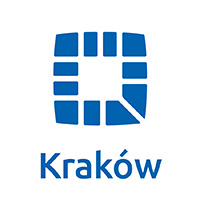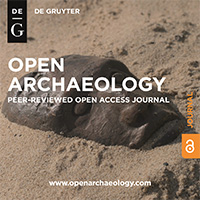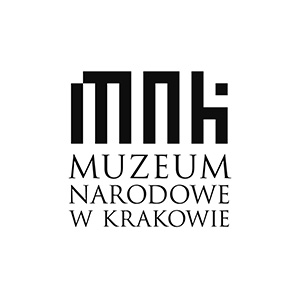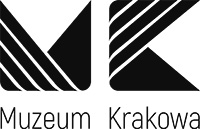We are delighted to inform you that all participants of CAA 2019 will have a free of charge entrance to most of Kraków’s museums. You will just have to show your conference ID at the ticket office.
List of museums supporting CAA 2019:
Muzeum Narodowe w Krakowie (The National Museum in Kraków)
Al. 3 Maja 1; www.mnk.pl/
The National Museum in Kraków, established in 1879, is the main branch of Poland’s National Museum. The Museum consists of 21 departments which are divided by art period; 11 galleries, 2 libraries, and 12 conservation workshops. It holds some 780,000 art objects, spanning from classical archaeology to modern art, with special focus on Polish painting. Kraków National Museum was first housed at the upper floor of the Sukiennice and moved to New Main in 1992. The Main Building features the newly renovated upper Gallery of the Twentieth Century Polish Art, one of the largest galleries of painting and sculpture from the late 19th century on in Poland, with most celebrated artwork by Jacek Malczewski, Leon Wyczółkowski, Włodzimierz Tetmajer; an extensive collection of works by Stanisław Wyspiański; and also, works by artists of the interwar and postwar periods: the Polish cubists, expressionists, colorists, the avant-garde of the 1930s, and representatives of New Directions from the 1960s. It also has a vast display of militaria ranging from 12th to 20th century, decorative arts and crafts with gold, silver and precious stone artefacts ranging from twelfth to the eighteenth century. The Museum has one of Poland’s largest collections of Polish and Oriental antique rugs and carpets, as well as a collection of the sixteenth to twentieth-century costumes. It also display one the most important piece of cultural heritage – Lady with an Ermine by Leonardo da Vinci.
https://goo.gl/maps/w7jab6ZkjKm
Sukiennice (Kraków Cloth Hall)
Rynek Główny 1/3; www.mnk.pl/branch/gallery-of-the-19th-century-polish-art-the-sukiennice-the-cloth-hall
The Kraków Cloth Hall dates back to the Renaissance and was a major centre of international trade, the source of a variety of exotic imports from the east – spices, silk, leather and wax, and exports of textiles, lead, and salt from the Wieliczka Salt Mine. It is one of the city’s most recognizable icons, listed as a UNESCO World Heritage Site since 1978. Aside from its history and cultural value, the hall still is still used as a centre of commerce. On the upper floor of the hall is the museum of the largest permanent exhibit of the 19th-century Polish painting and sculpture, among others famed Prussian Homage by Jan Matejko. It features late Baroque, Rococo, and Classicist 18th-century portraits and battle scenes by Polish and foreign pre-Romantics, the art of partitioned Poland, mythological and biblical scenes, the art of representative members of Young Poland, prominent impressionists and many more.
https://goo.gl/maps/7yeHvE2g8Ct
Wieża Ratuszowa (Town Hall Tower)
Rynek Główny 1; www.muzeumkrakowa.pl/branches/town-hall-tower
Town Hall Tower is one of the main focal points Kraków and the only remaining part of the old Kraków Town Hall demolished in 1820 as part of the city plan to open up the Main Square. It was built at the end of the 13th century and stands 70 metres tall. The top floor of the tower with an observation deck is open to visitors. The entrance to the tower is guarded by a pair of stone lions carved at the beginning of the 19th century and brought to Kraków from the palace of the Morstin family in Pławowice during the renovations of 1961–1965. Its cellars once housed a city prison with a Medieval torture chamber. The tower serves as one of many branches of The Historical Museum of the City of Kraków featuring a permanent display of photographs of the Market Square Exhibition.
https://goo.gl/maps/YZkAHq91kts
Krzysztofory (Krzysztofory Palace)
Rynek Główny 35; www.muzeumkrakowa.pl/exhibitions/230
The Krzysztofory Palace is a baroque palace located on the Main Square. Between 1640 and 1649 then it was owned by the Crown Court Marshal Adam Kazanowski. The palace is named after St. Krzysztof, the patron saint of medieval tenements. Towards the end of the 19th century, the ground floor was taken up by a popular restaurant Pod Palmą founded by Antoni Hawełka, purveyor to the imperial court of Vienna. At present, it is the location of the Historical Museum of Kraków. A new exhibition Cyberteka is open inside. It presents the spatial and urban development of Kraków from pre-incorporation times to 1909−1915 when the project of Great Kraków was executed. The exhibition also presents unique artefacts, including the insignia of local authorities.
https://goo.gl/maps/HmpTa9fQ3Av
Kamienica Szołayskich im. Feliksa Jasieńskiego (The Feliks Jasieński Szołayski House)
plac Szczepański 9; www.mnk.pl/branch/the-szolayski-house/about-the-branch
The Szołayski house was erected in the 15th century, while its present shape was achieved as a result of renovations in the 17th, 19th and 20th centuries. Initially, a bourgeois property, from the second quarter of the 17th century to the end of the 18th century it belonged to the Corpus Christi order, then again became private property. In the years 1849-1856, it housed the editorial office and printing house of Krakow’s Czas newspaper. Since 1902, the building belonged to the Szołayski aristocratic family who in 1904 bequeathed it to the National Museum in Krakow. In 2003, the Stanisław Wyspiański Museum relocated from Kanonicza Street, opened in the Szołayski House along with a permanent exhibition dedicated to Feliks Jasieński.
https://goo.gl/maps/6a4kQXdrAF32
Biblioteka Czartoryskich (The Princes Czartoryski Library)
Św. Marka 17, Kraków; www.mnk.pl/oddzial/biblioteka-ksiazat-czartoryskich
The contents of the library originate from the family princes Czartoryski’s book collection. The beginnings of the library date back to the year 1770. The failure of the November Uprising resulted in the dispersion of the collection and began a nearly half-a-century-long exile and in 1950, the library and museum collections came under the control of the state and were incorporated into the National Museum in Krakow as a deposit. Terms of use of the library’s collection can be found on the website.
https://goo.gl/maps/DJZCyPhpUEP2
Dom Jana Matejki (The Jan Matejko House)
Floriańska 41; www.mnk.pl/oddzial/dom-jana-matejki
The museum in the family home of Jan Matejko (1838-1893), the greatest Polish artist working in the genre of history painting, contains various artefacts devoted to his person and his family – approximately collection of 6,000 exhibits. The exhibits include everyday objects and memorabilia of the artist and his family: letters, official documents, jubilee mementoes, tokens of appreciation, and, above all, oil paintings and drawings.
https://goo.gl/maps/yhaNd654Xi92
Barbakan i Mury Obronne (Barbican and City Walls)
Pijarska 30; www.muzeumkrakowa.pl/branches/city-defence-walls
First information about the fortifications is from 1285. At the beginning of the 19th century part of a wall and eight towers have been dismounted, but thanks to the Feliks Radwański and Jan Librowski northern part of them is preserved. They consisting of the Floriańska gate, the tower of Pasamoników, Stolarska and Ciesielska and the building of the former town assault.
The Barbican is a fortified outpost once connected to the city walls. It was built around 1498 and it is a historic gateway leading into the Old Town. It is one of the few remaining relics of the complex network of fortifications and defensive barriers that once encircled the city and it is one of only three such structures still surviving in Europe, and the best preserved. It is a moated cylindrical brick structure with an inner courtyard and seven turrets. Its 3-meter-thick walls hold 130 embrasures. The barbican was originally linked to the city walls by a covered passageway that led through St. Florian’s Gate and served as a checkpoint for all who entered the city.
https://goo.gl/maps/DpghFPiok6A2
Muzeum im. Emeryka Hutten-Czapskiego (The Emeryk Hutten-Czapski Museum)
Józefa Piłsudskiego 13; www.mnk.pl/oddzial/muzeum-im-emeryka-hutten-czapskiego
Count Emeryk Hutten-Czapski, (1828-1896) was a Vice-Governor of St Petersburg and collector of books, prints, and numismatics. In 1894, he purchased a 19th-century palace and built an addition to house his collection. After his death, his wife, Baroness Elzbieta Meyendorff, donated the collection to the city of Krakow. Since 1939 the museum remained closed to the public until it was opened once again to the public in 2013. Currently on displays and in storerooms are approximately 109,000 objects, such as antique coins, Polish and foreign coins, medals, religious medallions, banknotes, varia and deposits. In 2016 the Józef Czapski’s pavilion was opened. It is dedicated to the grandson of the creator of the most valuable numismatic collection in Poland. On a permanent exhibition, materials related to his life and work.
https://goo.gl/maps/dfcvZxUqHYM2
Ośrodek kultury europejskiej Europeum (The Europeum centre for European culture)
- Sikorskiego 6; www.mnk.pl/oddzial/osrodek-kultury-europejskiej-europeum
The National Museum’s permanent exhibition of European art stored in 17th-century granary. The exposition includes over 100 paintings and sculptures presenting seven centuries of the history of European art. There are such works as Crucifixion by Paolo Veneziano, Adoration of the Child by Lorenzo Lotto or The Sermon of St. John the Baptist by Pieter Breughel the Younger as well as a French 14th-century sculpture Madonna with the Child or The Bishop’s Bust, created a. 1500 in the Netherlands.
https://goo.gl/maps/Gu1F3TrBKVv
Dom Józefa Mehoffera (The Józef Mehoffer House)
Krupnicza 26; www.mnk.pl/branch/the-mehoffer-house
The Józef Mehoffer House is located in the former residence of the painter at no. 26 Krupnicza Street. Erected as a one-storey brick building on the site of a former wooden manor that burnt down in an 1850 fire, it owes its present shape to the reconstruction carried out in the years 1873-1874. It was a birth-place of Józef Wyspiański, author of The Wedding. The building was purchased and renovated by Józef Mehoffer (1869-1946) in 1932 and now is a two-storey building facing the street, with a pass-through vestibule and a short wing on the right. In 1996 it was open as a biographical museum, furnished with original furniture, wall hangings, clocks and numerous works by Józef Mehoffer. The house includes a garden originally designed by the artist and restored in 2003.
https://goo.gl/maps/xvifhMric5T2
Muzeum Archeologiczne w Krakowie (Archaeological Museum in Kraków)
Senacka 3; www.ma.krakow.pl/
The Museum includes five permanent exhibitions – Gallery of Ancient Egypt, Prehistoric Pottery, The Garden of Ceramics, The Prehistory and Early Middle Ages of Lesser Poland and The Carts of Bronocice. One of the most recognizable artefacts presented in the museum is the Zbruch Idol (Sviatovid) – a 9th-century sculpture, monument of pre-Christian Slavic beliefs.
https://goo.gl/maps/seSjq2zLtP82
Pałac biskupa Erazma Ciołka (The bishop Erazm Ciołek Palace)
Kanonicza 17; www.mnk.pl/oddzial/palac-biskupa-erazma-ciolka
The Palace was erected in the beginning of the 16th century for bishop Erazm Ciołek, bishop of Płock, a diplomat, humanist and a patron of the artist. The building features Gothic and Italian Renaissance elements. It was extended and renovated in 16th, 17th and the first half of the 18th centuries. In 2007 two permanent exhibitions were opened – Art of Old Poland. 12th – 18th Centuries and Orthodox Art of the Old Polish Republic.
https://goo.gl/maps/QSkkUhZepAn
Stara Synagoga (The Old Synagogue)
Szeroka 24; www.muzeumkrakowa.pl/branches/old-synagogue
Old Synagogue is an Orthodox Jewish synagogue in the Kazimierz district of Kraków. It is the oldest synagogue building still standing in Poland, and one of the most precious landmarks of Jewish architecture in Europe. It was built in the 15th century and rebuilt in 1570 under the watchful eye of an Italian architect Mateo Gucci. There was further reconstruction work at the beginning of the 20th century. The Old Synagogue is a rare example of a Polish Fortress synagogue. The synagogue was completely devastated and ransacked by the Germans during World War II and was used as a magazine during the occupation. In 1943, 30 Polish hostages were executed at its wall. From 1956 to 1959 it was renovated and currently operates as a museum, with particular focus on Kraków’s Jews.
https://goo.gl/maps/j4NUNtLdBqR2
Muzeum Podgórza (The Podgórze Museum)
Powstańców Wielkopolskich 1; www.muzeumkrakowa.pl/branches/podgorze-museum
The Podgórze Museum is a branch of the Historical Museum of the City of Krakow. The permanent exhibition, In the Shadow of Krak’s Mound, presents the history and the phenomenon of Podgórze – a multicultural and multinational town, its spectacular industrial success, as well as its mythology and legends. It presents the history of the areas belonging to the town of Kazimierz, located on the right bank of the Zakazimierka River, where the town of Podgórze was established in the late 18th century, the history of the town itself and the later district of Krakow.
https://goo.gl/maps/PSuaiCX9ESv
Muzeum Nowej Huty (Nowa Huta Museum)
Centrum E 1; www.muzeumkrakowa.pl/branches/history-nowa-huta-quarter
The museum is focused on research related to the development of Nowa Huta from prehistory to the present and provides information about it. The branch is located in the former Światowid cinema. It has, among others photo collections of Nowa Huta by famous Krakow photographers, architectural designs of Nowa Huta buildings, memorabilia documenting the history of Nowa Huta Solidarność, as well as everyday life of the inhabitants.
https://goo.gl/maps/tE9u4a4zvxA2
Muzeum Szymanowskiego w willi Atma, Zakopane (The Szymanowski Museum in Atma in Zakopane)
Kasprusie 19, Zakopane; www.mnk.pl/oddzial/muzeum-karola-szymanowskiego
The villa ‘Atma’ in Zakopane is the biographical museum of Karol Szymanowski (1882-1937) – one of the greatest Polish composer and pianist, in the villa where he settled permanently. Villa ‘Atma’ was erected after 1890 as a typical guest house, one of many built-in Zakopane in the late 19th and early 20th centuries for rent to holidaymakers. The house is an example of the Zakopane style, introduced to architecture by Stanisław Witkiewicz. The museum was opened in 1976 on the ground floor and it offers basic information about the life and work of the composer and his ties with the Tatra Mountains and Zakopane.










